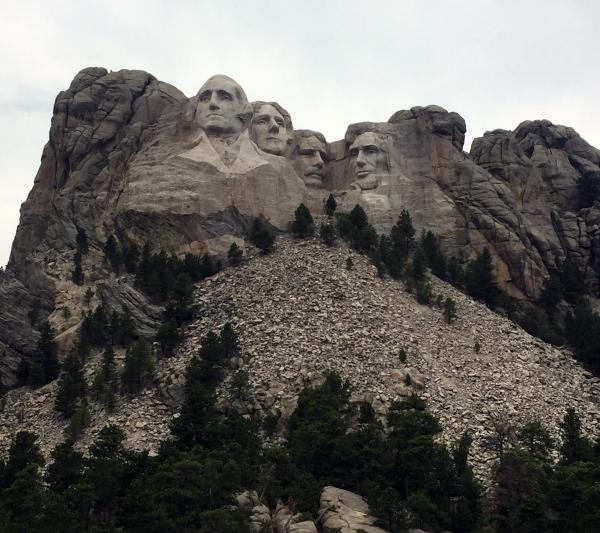KID REPORTERS’ NOTEBOOK
Government Shutdown Ends

Grace at Bark!, a pet store in Maryland that offered free pet food to federal workers during the shutdown.
On January 25, the longest government shutdown in United States history ended. For 35 days, 800,000 federal workers had gone without pay.
The shutdown caused major disruptions across the country. At airports, flight traffic controllers and security personnel endured even more stress than usual, as they worried about feeding their families while keeping the public safe.
Native American communities lost government funding for health clinics, education, and infrastructure. Many people who rely on federal food programs went hungry.
Without rangers and other staff members, National Parks had to close. This meant a total loss of revenue of about $400,000 a day. Some parks were open for a while, but because of damage to roads, overflowing toilets, and piles of garbage, they were forced to close.
“The damage done to our parks will be felt for weeks, months, or even years,” said Theresa Pierno, president and chief executive officer of the National Parks Conservation Association.
The effects of the shutdown could even be felt in space. When one of the main instruments on the Hubble Space Telescope stopped working, it couldn’t be repaired because NASA engineers were on furlough (a temporary layoff).
A LOSS FOR THE PRESIDENT
The shutdown began on December 22, 2018. It was triggered by President Donald Trump’s demand for $5.7 billion for a border wall between the U.S. and Mexico.
“The southern border is a dangerous, horrible disaster,” Trump said on January 3 in the White House Rose Garden. “We’ve done a great job, but you can’t really do the kind of job we have to do unless you have a major, powerful barrier.”
Many people dispute the Republican President’s claim that such a wall is essential for national security. Democrats and others say that money for additional staffing and state-of-the-art technology at border crossings would be more effective in curtailing illegal immigration.
After 35 days, Democrats and Republicans in Congress finally reached a temporary agreement, allowing them to reopen the government for three weeks. A permanent budget deal was reached on February 14. But, to President Trump’s dismay, only $1.375 billion was allocated for barrier protection at the southern border.
The resolution in Congress was widely seen as a defeat for President Trump and a victory for Democratic House Speaker Nancy Pelosi. “It’s not an emergency, what’s happening at the border,” Pelosi said after the shutdown ended. “It’s a humanitarian challenge.” Pelosi thinks that erecting a wall would send the wrong message to the world about American values.

Mount Rushmore in South Dakota was one of dozens of National Parks affected by the recent government shutdown.
A “NATIONAL EMERGENCY”?
The shutdown affected an estimated 5,000,000 people. This includes family members of federal workers and workers whose businesses rely on federal employees. Many people are still feeling the pinch. While federal workers will be paid the money that is owed to them, government contractors, restaurant workers, and others cannot recover lost income.
During the shutdown, many businesses and charity organizations tried to help. Bark!, a pet supply shop in Olney, Maryland, gave away two small bags of pet food per person per month to individuals with a government I.D. “As more paychecks aren’t being paid, more people are getting pet food,” said assistant manager Hariz Manipady.
Because of the long-lasting damage to the country’s economy, future shutdowns are unlikely. But President Trump now says that he will declare a national emergency to fund a border wall. This means that he would spend money from the government’s budget without the approval of Congress.
At least 16 states are suing the President to block the emergency order. They say that it’s unconstitutional. "The President has used the pretext of a manufactured ‘crisis’ of unlawful immigration to declare a national emergency,” the plaintiffs wrote in California et al. v. Trump et al. They argue that the U.S. Constitution does not allow a President to spend money on initiatives that lawmakers have rejected.
